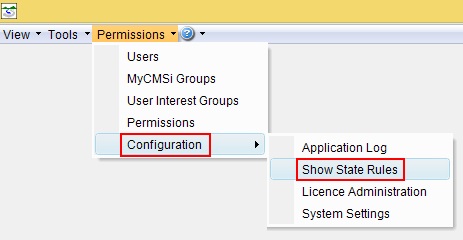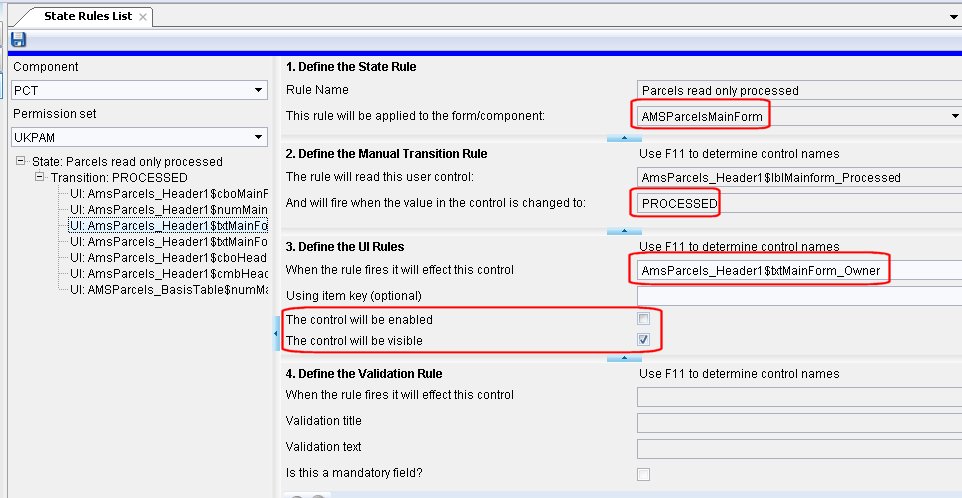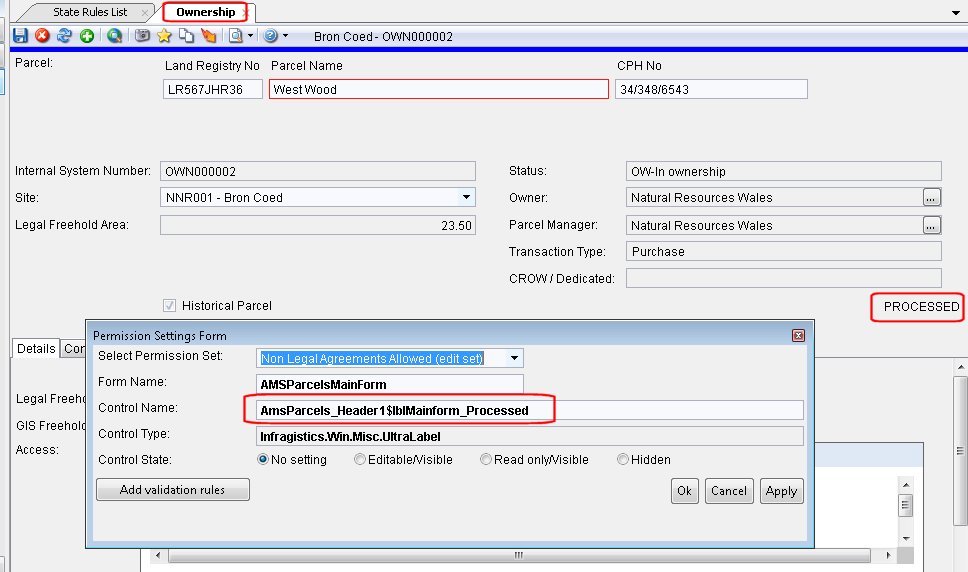Creating or editing State Rules
To create or edit state rules, select Permissions -> Show State Rules from the main menu.

The state rules form displays all of the state rules for a component in the first drop down on the left hand pane. Use the dropdown list at the top of the pane to select the area of CMSi that the state rule should apply to.
Note that the components are listed by their trigram or code. These can be a bit cryptic and differ from database to database. The main trigrams you may see are:
| Component |
Trigram |
| Agreements |
AGR / OVK |
| Cadaster / Land Edits |
KAT |
| Contacts |
REL |
| Cultural Heritage |
CHM |
| Grants |
SUB |
| Legal Rights |
JRG / RIG |
| Observations |
OBS |
| Parcels / Ownership |
PCT / OWN |
| Property Transactions |
VGT / TRA |
| Vegetation |
VEG |
Each state rule applies to a particular Permission Set. In this example, this relates to Parcels (Ownership) and if a related Property Transaction has been processed (e.g. a purchase or a sale is finalised), that process will have changed the Parcel owner, manager and status. If this is the case, it would not make sense to change these fields without a new Property Transaction therefore this state rule makes these key fields read-only to everyone with this permission set. Note if for some reason these fields do need editing, the administrator could have this permission set removed from their group and they would then be able to amend the data.
In the Permission Set drop-down it is possible to select 'No Permissions'. Selecting this would mean that the State Rule applies to all users.
Once a State Rule has been crated it is not possible to change it's Permission Set.

Beneath the dropdowns are transition nodes. These are the dropdown status at which you want to control the editability or visibility of certain fields on the form. On the Parcels form, there is a label in the bottom right of the form header that says "PROCESSED" if the parcel has a linked Property Transaction that has been completed. Using F11, you can find out the control name of this label and hence use it in the state rule.

Beneath the transition node, you can set the UI or User Interface rules or a validation rule.This means what happens when in this case the parcel is processed. Again using F11, you can get the control names for each field you want to set to read-only, invisible or to be mandatory. Remember it is not good practice to enable fields using State Rules as this can invalidate other permissions you have set on this field. Only make fields read-only i.e the box should be left blank.